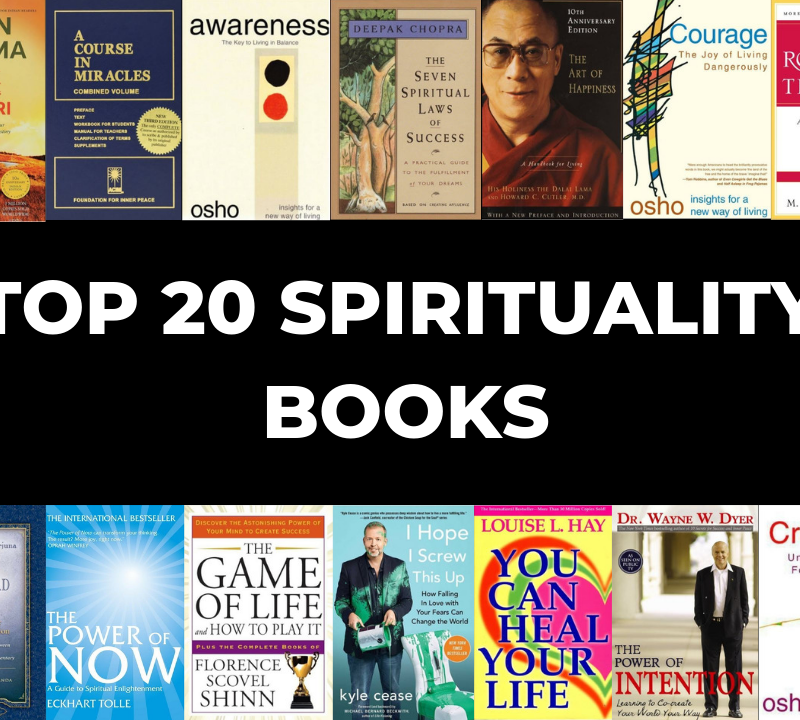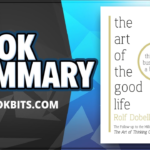GET THE 500+ BOOK SUMMARY BOX SET IN PDF & MP3 here
FOLLOW US HERE > |YouTube |Spotify | Instagram | Facebook | Newsletter | Website
The Art of Meditation by Matthieu Ricard
In the West, because of the hectic pace of our lives full of activities which keep us busy from morning till night we have little leisure to ponder the fundamental causes of happiness. Many of us think, more or less consciously, that the more we increase our activities, the more our feelings are intensified and our the more our dissatisfaction is eradicated.
But in actuality, many of us are deceived and frustrated by the contemporary lifestyle. Unfortunately, we are often defeated because no solution seems viable, in particular, because the tradition that called for self-transformation has fallen out of favor.
Meditation techniques, then, aim to transform the mind, without having to practice any special type of religion. We all have a mind, we can therefore all work with it. But is it desirable to change ourselves? Some people advocate a special chemistry between positive and conflicting emotions, qualities, and defects, which come back to accepting oneself, loving yourself with your qualities and defects. The risk becomes living with chronic dissatisfaction so that you can improve yourself with a little effort or thought.
Imagine that you have been offered to spend a whole day experiencing jealousy. Would you accept that with pleasure? Not likely. On the contrary, if you were offered to spend the whole day having a heart full of love for others, would you accept it?
Our mind is frequently disturbed, and we are often tormented by sad thoughts, by anger, by the hurtful words that others say to us. At these moments, who doesn’t dream of controlling their emotions the better to be free and in control of himself?
Very often, we pass through this suffering voluntarily, but we don’t know what is possible, because we believe it is “human nature.” However, we can train our minds to cultivate positive emotions, develop our altruistic self, our lucidity, our internal peace, and our love, and meditation is a superb way to do this.
However, improving our minds is not the work of a single day. It’s normal to spend years learning how to walk, read, write, acquire professional skills, and become better at different activities such as sport or art.
By what miracle would the mind avoid this logic and be able to transform itself instantly without work? This would no more make sense than wanting to become a champion swimmer by swimming twice a month.
We spend much more energy improving the external conditions of our existence. But in the end, it’s always our mind that experiences the world and translates it into well-being or suffering. If we transform our way of looking at things, we will transform the quality of our life. And this change is the result of training our mind, which is meditation.
What is meditation? It is a practice that allows us to cultivate and develop certain fundamental human qualities. Primarily it is a matter of becoming familiar with a clear and fair vision of things. To cultivate the qualities that we all have inside us but which are often left fallow, in a latent state. The general idea is to improve oneself and to transform ourselves in order to transform the world.
A full life is not created by a succession of pleasurable sensations. But from a transformation in the way in which we understand and overcome the hazards of existence.
Meditation thus allows us to counteract mental toxins, our negative emotions, such as hate, obsession, and anger, but also to acquire better knowledge of the way in which our mind works, and a fairer perception of reality.
Furthermore, meditation is, at the same time, a multitude of beneficial effects on health and well-being, as I said earlier. Let’s take a look at how to practice it.
Chapter 2: What should you meditate about?
The object of meditation is the mind, which is often confused, agitated, rebellious and subjected to numerous effects of conditioning and automatic reactions. The goal of meditation is to make it clearer and more balanced.
Meditation is subject to numerous clichés. Meditation does not consist of emptying your mind and blocking your thoughts – which is impossible – nor of engaging the mind in endless cogitations to analyze the past or the future.
Nor is it a simple process of relaxation, even though there is an element of relaxation in meditation – but it is more like the relief associated with “letting go” of the attachments and whims of the ego that feed our internal conflicts.
Meditation consists of taking control of the mind, familiarizing yourself with a new understanding of the world, cultivating a way of being that makes you more free.
Being free is being your own master. It does not mean doing everything and anything; it is overcoming the constraints of suffering that dominate and darken the mind. By taking your life in hand. By setting a course for a destination that you have chosen in complete awareness, rather than being the prisoner of destructive habits and mental confusion.
Meditation is not a way of escaping reality. It is a way to seeing reality as it is, up close and persona. It unmasks the deep cause of our suffering and our mental confusion.
Meditation is also based on the experience of generations of practitioners. These people dedicated their lives to it and then taught a great many empirical methods for practicing it.
As with all apprenticeships, you must none-the-less explore for yourself the validity of these methods. Verify then take internal ownership of the conclusions which these wise people arrived at.
To get there, you should begin by quieting your turbulent mind, which seems like a captive monkey, that is so active that it enchains itself and is incapable of undoing its own chains.
Chapter 3: How to Meditate
You cannot learn how to meditate by reading, but by doing. It is however useful to follow the guidelines outlined by sages of the past, who offer in their works goldmines of information clearly exposing goals and methods for every meditation.
Matthieu Ricard recommends in this long chapter – 110 pages of the 150 that comprise The Art of Meditation! Some preliminary advice for practicing meditation, then summarizes and simplifies, while removing as much as possible their underlying religious basis.
For each one he recommends one or more meditation subjects, of which I will give you some examples, as well as quotes by the great masters of meditation or different Dalai-Lamas.
Conditions Conducive to Motivation:
- Follow the advice of a qualified guide: To be able to meditate you must first learn how to do it. A qualified instructor is therefore essential. In the best case, this will be an authentic spiritual master, otherwise you must be content with a serious instructor, or texts which are based on trustworthy sources.
- A place conducive to meditation: It is possible and desirable to keep up the benefits of meditation when you are plunged into the river of life, but it is absolutely essential to train your mind in a conducive environment, especially when you begin. You need a quiet place, without distractions, and where you won’t be disturbed.
- An appropriate physical posture: Physical posture influences your mental state. A posture called Vajrasana in seven points is recommended:
- Legs are crossed in the lotus position, in which you begin by folding the right leg over the left, then the left over the right. If that’s too difficult you can adopt the “half-lotus” which consists of putting the right leg under the left thigh and the left leg under the right thigh.
- Hands resting in your lap (the space stretching from your waist to your knees when you are sitting down), the right hand on the left hand, with the ends of your thumbs touching.
- Shoulders are slightly raised and leaning forward.
- The spine is very straight, “like a pile of gold coins.”
- The chin is slightly tilted inwards towards the throat.
- The tip of your tongue is touching the roof of your mouth.
- Your eyes are looking straight ahead of you, or slightly downwards, along the length of your nose, eyes wide open or half-closed.
- Be enthusiastic and motivated to become persistent. To get interested in something and devote some time to it, you must first find the advantages and understand if there are pluses and minuses in order to know how to persevere through difficult moments.
Finally, it is important to practice meditation regularly, even if it is only for 15 or 20 minutes, rather than trying for long sessions from time to time.
Furthermore, it is important that we are neither too tense nor too relaxed when we meditate, just like a guitar string must not be too tight or too loose in order to produce the right note.
Turning your mind towards meditation
Four subjects for reflection should capture our attention and reinforce our determination to meditate:
- The value of human life
Apart from enjoying a minimum amount of freedom and opportunity, human existence offers extraordinary opportunities for internal development, and it offers us a unique chance to realize the potential we all possess. This potential, obscured by our ignorance and emotional disturbance, spends most of its time living deep inside us like hidden treasure.
- The ephemeral nature of all things
Human life, as short as it is, is priceless. Reflecting on its impermanence allows us to appreciate the value of time, being aware that every second of life is precious, even while it is mundane, lets time run through our fingers like gold.
Meditation: Let’s think about the flow of the seasons, months, days, every moment, and the changes that affect every aspect of human life; let’s think about final death, at some uncertain hour beyond our choosing. Who knows how much time I have left to live?
It is important therefore that I consider deep inside myself. What is really important about my existence? How do I use the time I have left to live in the most fruitful way for myself and others? If I have aspirations for meditation and developing my internal qualities, it is never too early to dedicate myself to it.
- Behaviors to adopt and to avoid
In order to know the best way to proceed, you must not depend on dogma to distinguish between good and evil or comply with pre-established conventions.
You must respect with clarity the mechanisms of happiness and suffering such as we are able to observe them for ourselves, through being attentive.
Meditation: Let’s reach deep inside of ourselves and recognize that our desires are tied to suffering and finding authentic happiness. Sincerely be conscious of the fact that all living human beings wish for the same thing.
Consider the ties that bind and the consequences caused by certain types of thoughts, words, and actions – for example, those that inspire hate, greed, jealousy, and arrogance – generate suffering, and those that come from benevolence and wisdom lead to deep satisfaction.
- The inherent dissatisfaction of the ordinary world
Our actual situation is often far from being satisfying and a transformation is not only desirable but possible. We can use the many distractions offered by our modern world to forget the unsatisfying aspects of existence. We can even mask them behind attractive disguises – ceaseless activities, a flow of sensory experiences. The pursuit of wealth, power and fame, etc. Although, we will always be brought back to reality. The burden of suffering. It is therefore preferable to look this reality in the face, to get to the root causes of unhappiness and cultivate true happiness.
Other subjects for meditation
Following, I give you some of the other subjects from among many that Matthieu Ricard deals with:
- Meditation on complete consciousness
The automatic nature of our thoughts, which barely allow us to notice what is happening in the moment, is the opposite of complete consciousness. The latter means being perfectly aware of everything that happens in yourself and all around you, of everything we see, hear or feel. The past is no more, the future has not yet happened, and the present is at once elusive and immutable.
As Schrödinger put it, “The present is the only thing that has no end.” Cultivating complete consciousness of the present means that we must live lucidly in our present experience.
- Inner peace
To understand the true nature of the mind, you must pull back the veils created by automatic thought. To do this you must begin to allow the mind to become clear, calm, and attentive. Buddhist schools teach us 2 things for doing this:
- Calm-abidingor shamata. This is the state of mind that is peaceful, clear, and perfectly focused on its objective. It prepares the way by making the mind a malleable, efficient, and precise tool.
- Insightou Vipashyana. This is insight into the nature of the mind and phenomena. You arrive at it by minutely analyzing the conscience, and by practicing contemplation of the inner experience. It frees the mind from the yoke of mental affliction and the veil of ignorance.
Our mind is unstable most of the time and constantly busy with internal chattering which keeps up a background noise which we are barely conscious of. This dysfunction is the result of the mind itself; it is therefore logical that is equally capable of fixing it.
Shamata aims to appease the tumult of thoughts by concentrating on a single one which rarely captures our attention; breathing in and out. Since we breathe constantly, using this as a means of focusing allows us to leverage a precious tool that is always available.
This practice involves three important steps:
- Turning your attention towards the chosen object, in this case, breathing.
- Keeping your attention on this object.
- Being completely conscious of its nature.
- Progressing towards inner calm
Gradually, your mind will find calm. However in the beginning it seems the opposite occurs; you get the impression of having even more thoughts than before. It is not really the amount that has increased, it is simply that you have become conscious of their abundance. Pacifying the tumult of thoughts can be done by following this five steps:
- The waterfall that flows over a cliff: thoughts follow one after another without stopping.
- A torrent descending a gorge: the mind alternates between periods of rest and activity.
- A wide river which flows unimpeded: the mind reacts when it is disturbed by events, otherwise it remains calm.
- A lake rippled with waves: the mind is gently agitated on the surface but stays calm and alert deep down.
- A peaceful ocean: unshakeable and effortless no longer needs to fight against stray thoughts.
A progression such as this is not accomplished in a day, but sooner or later you will notice progress.
- Insight or Vipashyana
We constantly superimpose on the world our truncated vision of reality. The deformations that result are more causes of frustration and suffering. How many times have we considered someone or something to be totally desirable or totally detestable? With what force do we hold onto “me and “mine,” convinced that these concepts are sound?
Let’s imagine that we perceive the world as a dynamic flux of interdependent events the characteristics of which change endlessly. The concepts of “me” and “mine” appear much more fluid and will no longer be the object of such powerful fixations.
In order to develop this insight, we must have a clear, focused, and stable mind. However, shamata allows us to quiet disturbed emotions for a moment, but not get rid of them.
For this reason, it is important to use insight to understand the fundamental nature of conscience. The way in which emotions arise and flow one into another, and how our mental fabric reinforces our ego.
Vipashyana can be practiced on different levels, in different ways, and from different aspects, notably:
- Reach a fairer understanding of reality.
- Overcome the torment created by emotional disturbance.
- Uncover the importance of ego and understand the influence exerted by the concept of our suffering and our well being.
- Comprehend the fundamental nature of the mind.
- Let’s stop identifying ourselves with our emotions
One way of facing our emotional disturbance is to dissociate mentally from the emotion affecting us. Often, we completely identify with our emotions. Now, the mind is capable of analyzing what is happening to it. It is enough for it to notice these emotions as we would notice an external event taking place before our eyes.
The part of our mind that is conscious of anger is simply conscious; it is not angry.
Understanding this allows us to take a step back. Becoming aware that this emotion has no substance. Give it enough space so that is can dissipate by itself. Allow us to avoid two very harmful extremes.
Suppressing the emotion, which confines it to a corner of our mind like a time bomb, or letting it explode, to the detriment of those around us and our inner peace.













